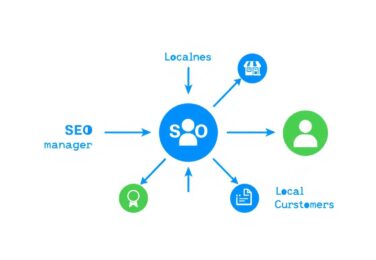Mastering Local SEO Management: A Step-by-Step Guide for Businesses
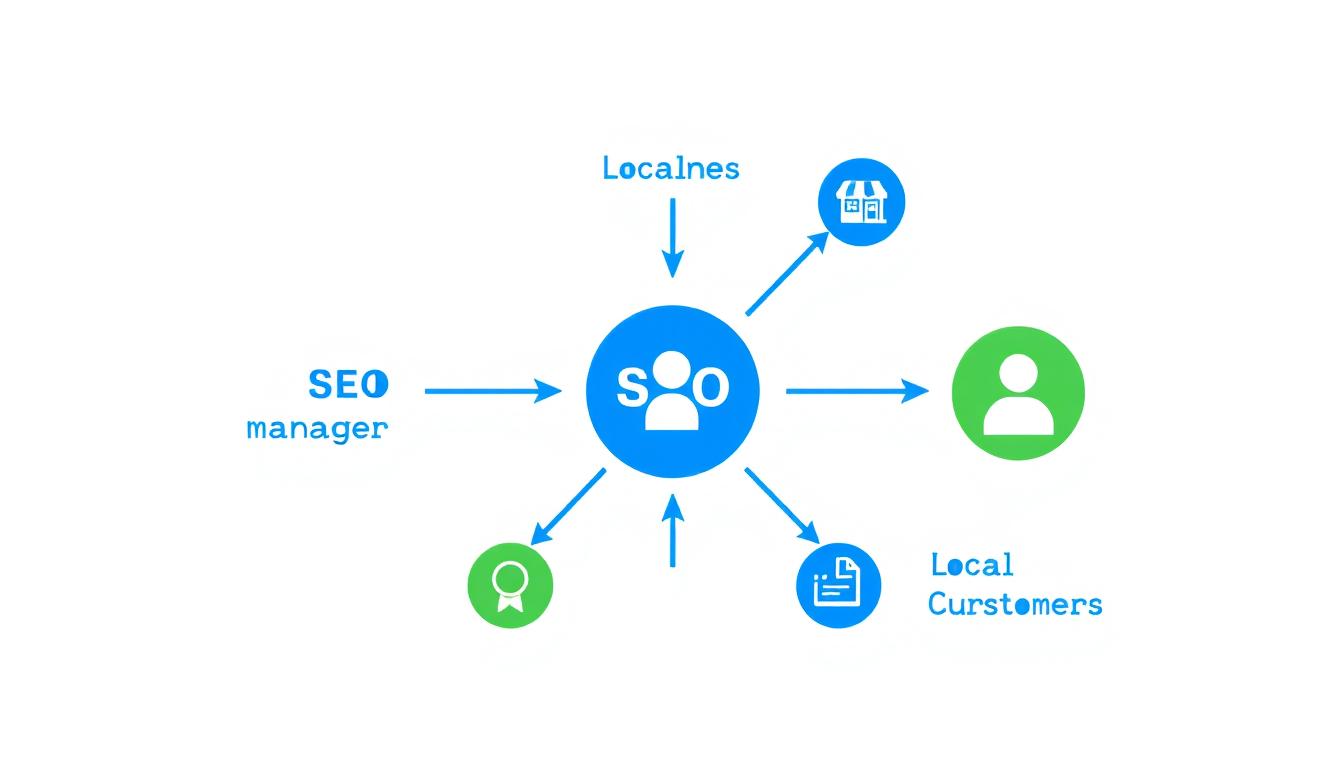
Table of Content
What is Local SEO Management?
Local SEO management is the process of optimising your online presence to attract more business from relevant local searches. These searches take place on Google and other search engines, with users specifically looking for businesses in their area.
How Local SEO management connects your business with local customers
Unlike traditional SEO, local SEO focuses specifically on promoting your products and services to local customers at the exact time they’re looking for them. When managed effectively, local SEO helps your business appear in the “Local Pack” (the map with three business listings), in Google Maps, and in organic search results for queries with local intent.
Why Local SEO Management Matters for Your Business
The statistics speak for themselves:
| Local Search Statistic | Impact on Your Business |
| 46% of all Google searches have local intent | Nearly half of all searches could potentially lead customers to your local business |
| 78% of local mobile searches result in an offline purchase | Local SEO directly influences in-store revenue |
| 88% of consumers who do a local search on their smartphone visit a store within 24 hours | Local searches create immediate business opportunities |
| 97% of consumers learn more about a local company online than anywhere else | Your online presence shapes customer perception before they ever visit |
Without proper local SEO management, you’re essentially invisible to these potential customers—regardless of how great your products or services might be.
Ready to improve your local visibility?
Start implementing the strategies in this guide today to connect with more local customers.
5 Key Components of Effective Local SEO Management
Successfully managing your local SEO requires attention to several critical areas. Let’s explore each component and provide actionable steps for implementation.
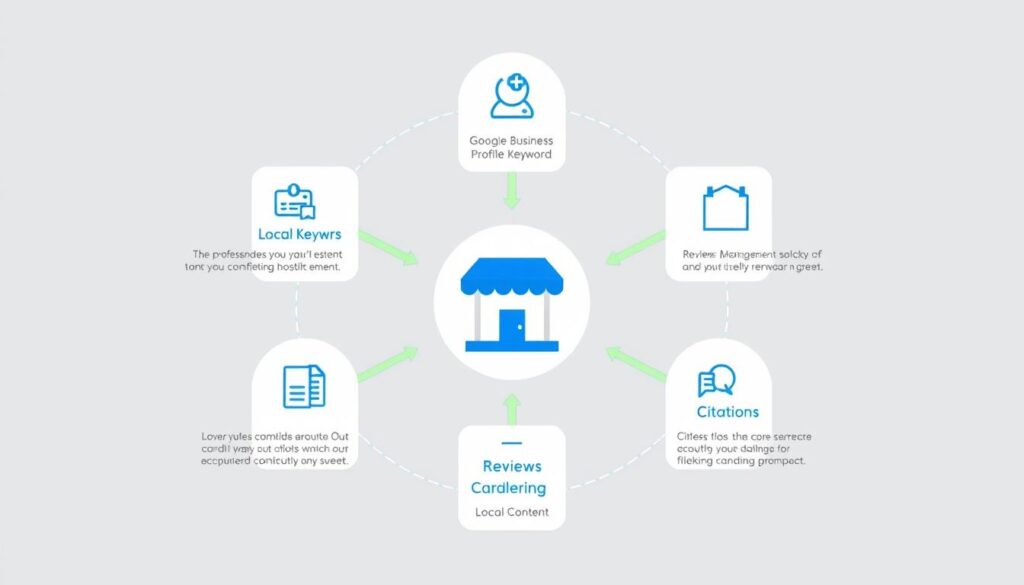
1. Google Business Profile Optimisation
Your Google Business Profile (formerly Google My Business) serves as the foundation of your local SEO strategy. It’s often the first impression potential customers have of your business, and it significantly influences your visibility in local search results.
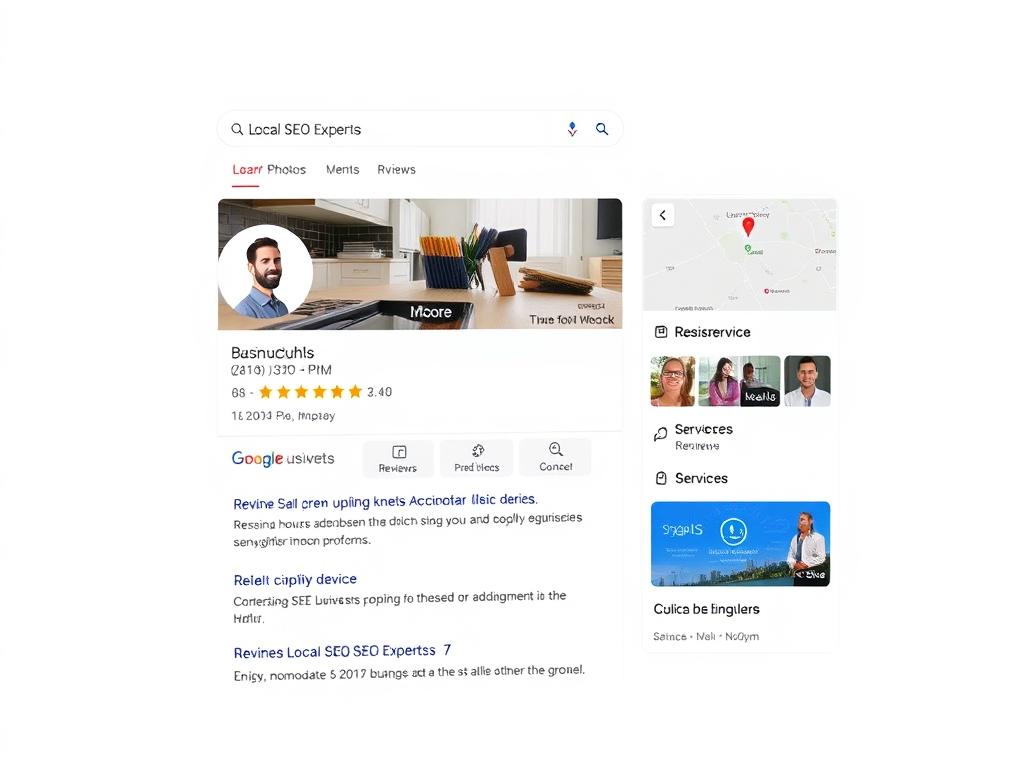
A well-optimised Google Business Profile increases visibility and trust
7-Day GBP Optimisation Checklist
- Day 1: Claim and verify your Google Business Profile if you haven’t already
- Day 2: Complete all basic information (name, address, phone number, website, hours)
- Day 3: Select the most accurate primary and secondary business categories
- Day 4: Add high-quality photos of your business (exterior, interior, products, team)
- Day 5: Write a compelling business description with relevant keywords
- Day 6: Add your products or services with descriptions and pricing
- Day 7: Set up messaging and create a link for customers to leave reviews
“Your Google Business Profile is often the deciding factor in whether a customer chooses your business or a competitor. Take the time to make it exceptional.”
Need help optimising your Google Business Profile?
Use our checklist to ensure you’re making the most of this powerful local SEO tool.
2. Local Keyword Research Strategies
Effective local SEO management requires understanding how your customers search for businesses like yours. Local keyword research helps you identify these search patterns and optimise your content accordingly.
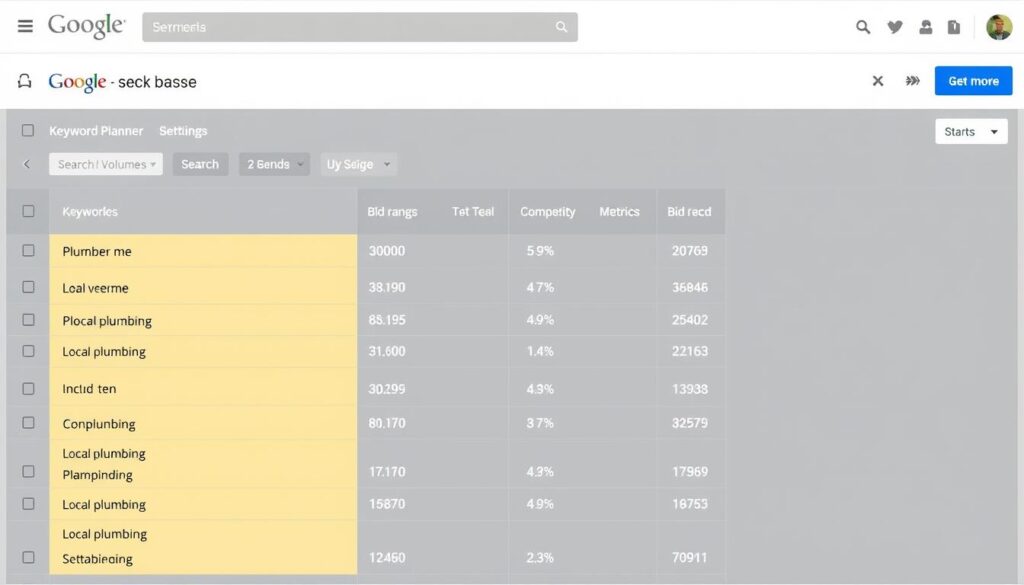
Using Google Keyword Planner to identify valuable local search terms
Types of Local Keywords to Target
Geo-Modified Keywords
Keywords that include your location
- Plumber in [City Name]
- Best coffee shop [Neighborhood]
- [City] hair salon
“Near Me” Keywords
Keywords with proximity indicators
- Restaurants near me
- Dentist near me
- Auto repair shop nearby
Service-Based Keywords
Keywords focused on specific services
- Emergency plumbing repair
- Same-day iPhone screen repair
- Wedding cake consultation
Local Keyword Research Checklist
- Identify your core products and services
- List all locations you serve (cities, neighborhoods, regions)
- Use Google Keyword Planner to find search volumes
- Analyse competitor websites for keyword inspiration
- Check Google’s “People also ask” and “Related searches” sections
- Review your Google Business Profile insights for search queries
- Create a spreadsheet mapping keywords to specific pages on your website
Pro Tip: Don’t just focus on high-volume keywords. Long-tail local keywords (like “gluten-free bakery downtown [city]”) often have less competition and higher conversion rates.
3. Online Reviews Management
Reviews are a critical component of local SEO management. They not only influence consumer decisions but also impact your visibility in local search results. Google considers the quantity, quality, and recency of reviews when determining local rankings.
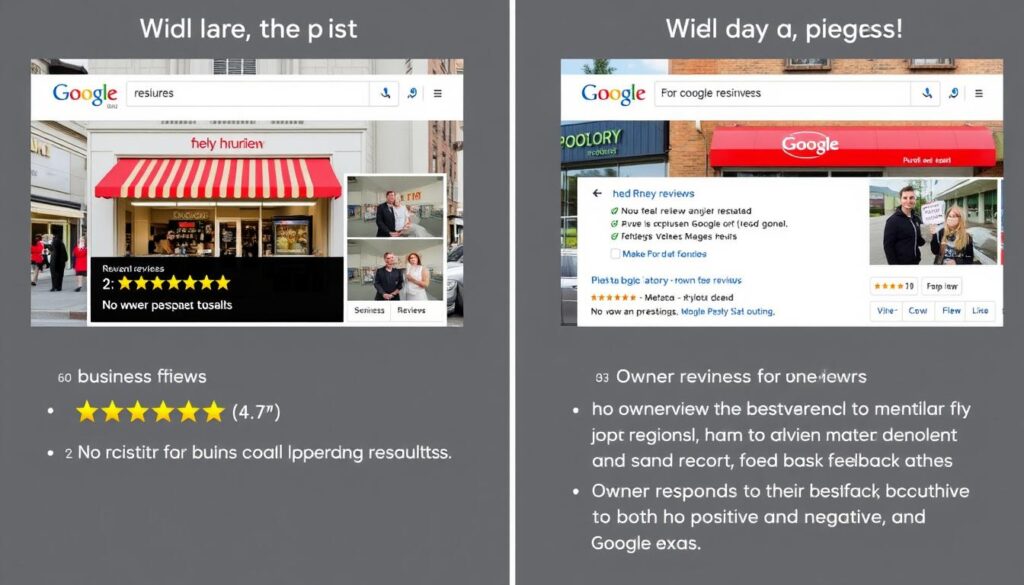
The impact of review management on local search visibility
Review Management Strategy Checklist
- Create a simple process for requesting reviews from satisfied customers
- Set up a custom short URL for your Google review page
- Respond to all reviews—both positive and negative—within 24-48 hours
- Train staff on how to naturally ask for reviews after positive interactions
- Create templates for responding to different types of reviews
- Monitor review platforms weekly (Google, Yelp, Facebook, industry-specific sites)
- Address negative reviews professionally and offer solutions
“How you respond to reviews is just as important as the reviews themselves. It shows potential customers how you handle both praise and problems.”
How should I respond to negative reviews?
Always respond professionally and constructively. Thank the reviewer for their feedback, apologise for their negative experience, explain any changes you’ve made as a result, and offer to continue the conversation offline to resolve their concerns.
4. Localised Content Creation
Creating content specifically tailored to your local audience is a powerful way to improve your local SEO management. This content helps search engines understand your local relevance and provides valuable information to potential customers.
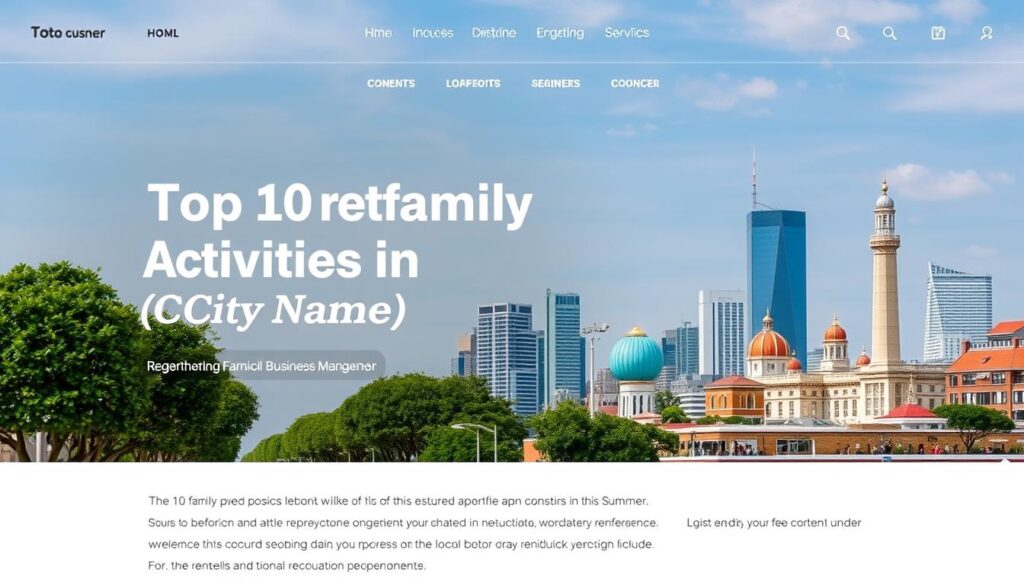
Localised content connects your business with community interests
Types of Localised Content to Create
Location-Specific Pages
- Service pages for each location you serve
- Location-specific case studies
- Neighborhood guides relevant to your business
Local Resource Content
- Lists of local events related to your industry
- “Best of” guides for your city
- Local news commentary relevant to your business
Community Involvement Content
- Spotlights on local charities you support
- Coverage of your participation in local events
- Interviews with local business partners
Local FAQ Content
- Location-specific frequently asked questions
- Seasonal content relevant to your local area
- Local regulations or information related to your industry
Localised Content Creation Checklist
- Research local events, news, and trends relevant to your business
- Create a content calendar that includes local seasonal topics
- Optimise page titles and meta descriptions with local keywords
- Include location-specific information in your content
- Add local schema markup to help search engines understand your content
- Use local images with optimised alt text
- Link to other relevant local businesses and resources
Content Idea: Create a “Ultimate Guide to [Your Service] in [Your City]” that addresses common local questions and concerns. This type of comprehensive local resource can attract both links and customers.
5. Citation Building and NAP Consistency
Citations are online mentions of your business name, address, and phone number (NAP). Consistent citations across the web help search engines verify your business information and improve your local search rankings.
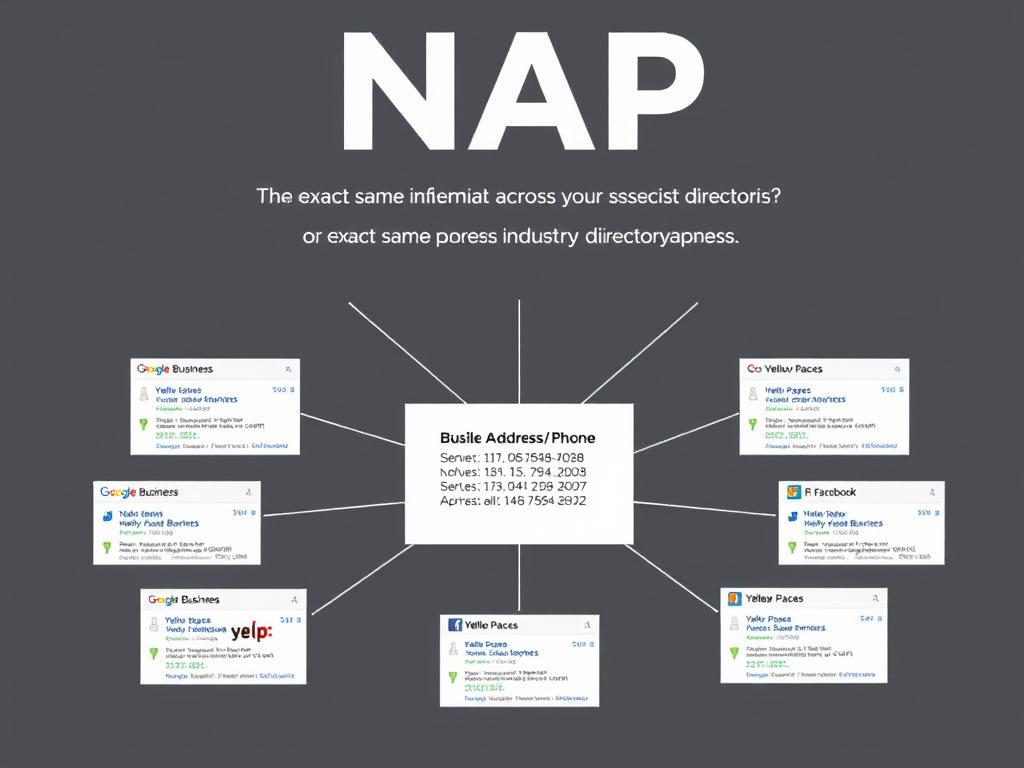
NAP consistency across directories builds trust with search engines
Citation Building Checklist
- Audit your existing citations for consistency and accuracy
- Create a master document with your correct NAP information
- Claim and optimise listings on major directories (Google, Yelp, Bing Places, etc.)
- Add listings to industry-specific directories
- Include your business in local chamber of commerce and community directories
- Set up a system to monitor citations for changes or inaccuracies
- Update all citations when your business information changes
Warning: Inconsistent NAP information across different directories can confuse search engines and harm your local rankings. Even small differences like “Street” vs. “St.” can impact your results.
Top Business Directories for Local Citations
General Directories
- Google Business Profile
- Bing Places
- Yelp
- Yellow Pages
- Facebook Business
Local Directories
- Chamber of Commerce
- Local newspaper listings
- City business directories
- Community websites
- Regional business associations
Industry-Specific Directories
- TripAdvisor (hospitality)
- Healthgrades (healthcare)
- Avvo (legal)
- HomeAdvisor (home services)
- OpenTable (restaurants)
Essential Tools for Local SEO Management
The right tools can make local SEO management more efficient and effective. Here are our top recommendations for both free and premium options.
3 Free Tools for Local SEO Management

Google Keyword Planner
Perfect for researching local keywords and their search volumes. Filter results by location to find the most relevant terms for your area.

Google Business Manager
Essential for managing your Google Business Profile, responding to reviews, posting updates, and tracking local search performance.

Google Search Console
Monitor your website’s performance in search results, identify local search queries, and fix technical issues affecting visibility.
2 Premium Tools Worth the Investment
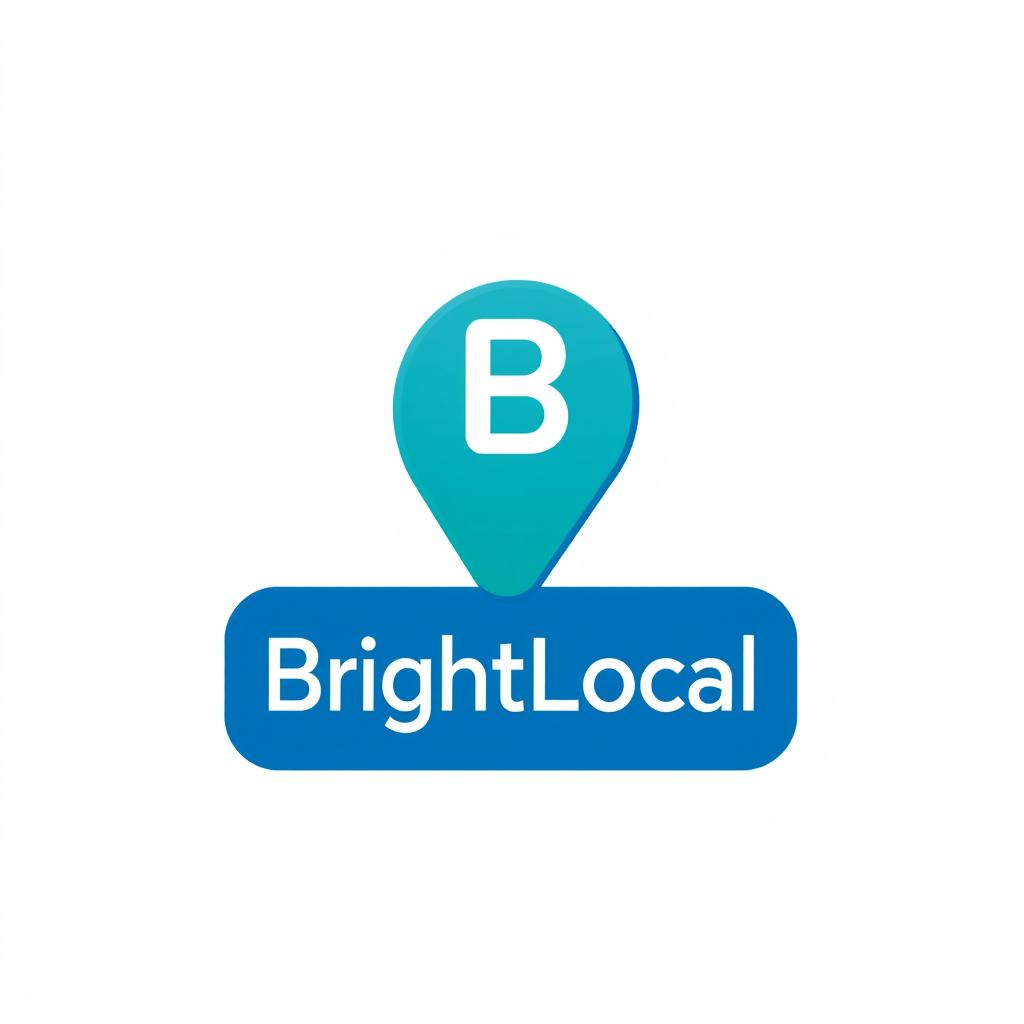
BrightLocal
Comprehensive local SEO platform offering citation building, review management, rank tracking, and competitor analysis. Ideal for businesses managing multiple locations.

Moz Local
Streamlines citation management by distributing your business information to major directories and data aggregators. Includes duplicate listing management and review monitoring.
Real-World Success Stories: Local SEO Management in Action
Let’s look at how businesses have successfully implemented local SEO management strategies to achieve remarkable results.
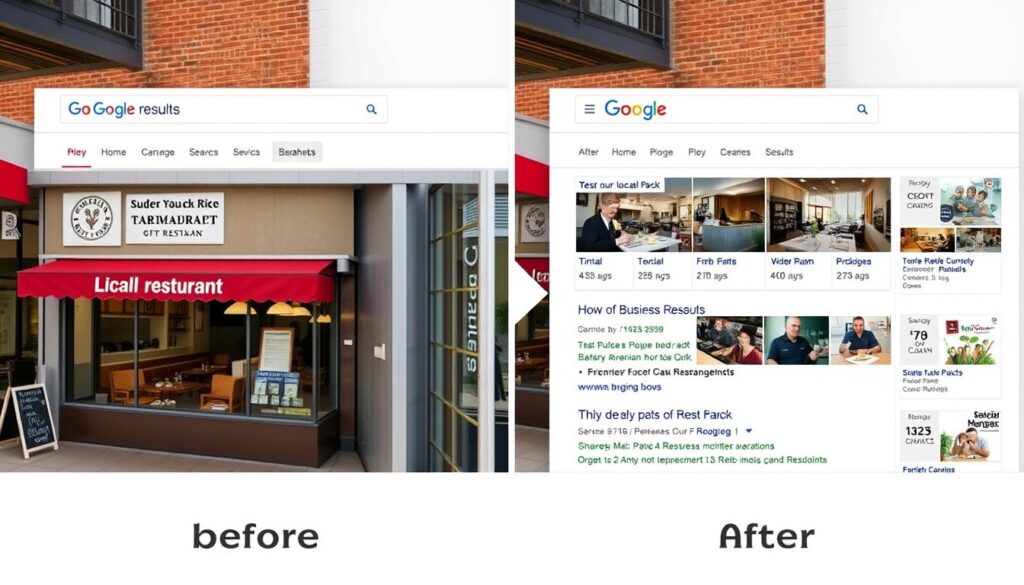
Case Study: Family-Owned Restaurant
Challenge:
A family-owned restaurant in a competitive urban area was struggling to attract new customers despite excellent food and service. They had minimal online presence and were invisible in local search results.
Solution:
- Created and optimised a Google Business Profile with high-quality food photos
- Implemented a review generation strategy, increasing reviews from 7 to 87 in six months
- Developed location-specific content about neighborhood events and local sourcing
- Built citations on restaurant-specific directories and local business listings
Results:
- Achieved position in the Local Pack for key terms like “best restaurant [neighborhood]”
- Increased website traffic by 143% from local searches
- Grew weekday dinner reservations by 37%
- Expanded catering business through improved local visibility
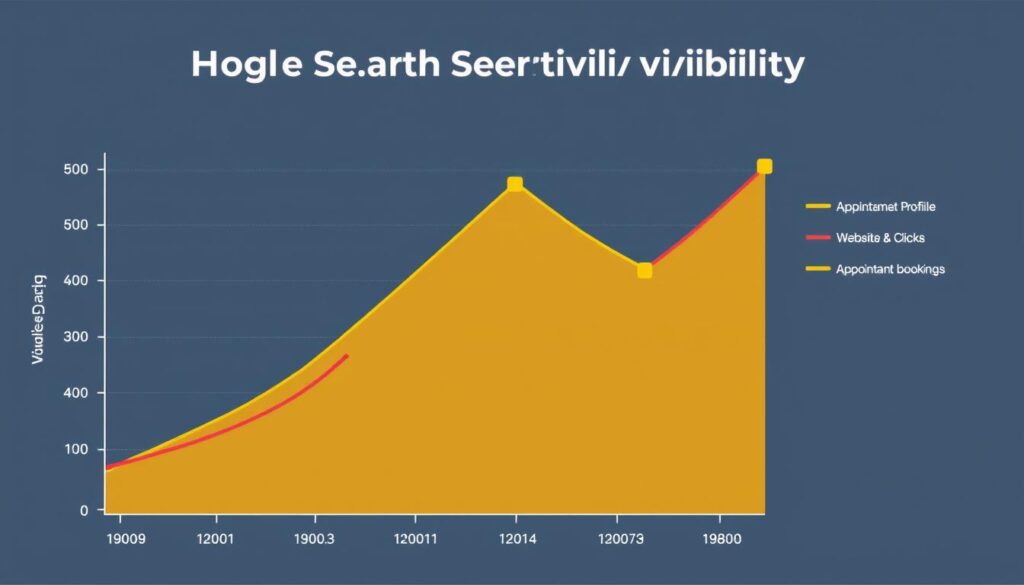
Case Study: Multi-Location Dental Practice
Challenge:
A dental practice with three locations was struggling to differentiate each office in local search results. They were losing potential patients to competitors with stronger local presence.
Solution:
- Created separate Google Business Profiles for each location with unique content
- Developed location-specific pages on the website with unique service information
- Implemented a structured review management system across all locations
- Built local backlinks through community sponsorships and events
Results:
- All three locations began appearing in Local Pack results for their respective areas
- 28% increase in new patient appointments attributed to local search
- Improved conversion rate on location pages by 17%
- Reduced cost-per-acquisition compared to paid advertising
Common Local SEO Management Mistakes to Avoid
Even with the best intentions, businesses often make mistakes that undermine their local SEO efforts. Here are the most common pitfalls and how to avoid them.
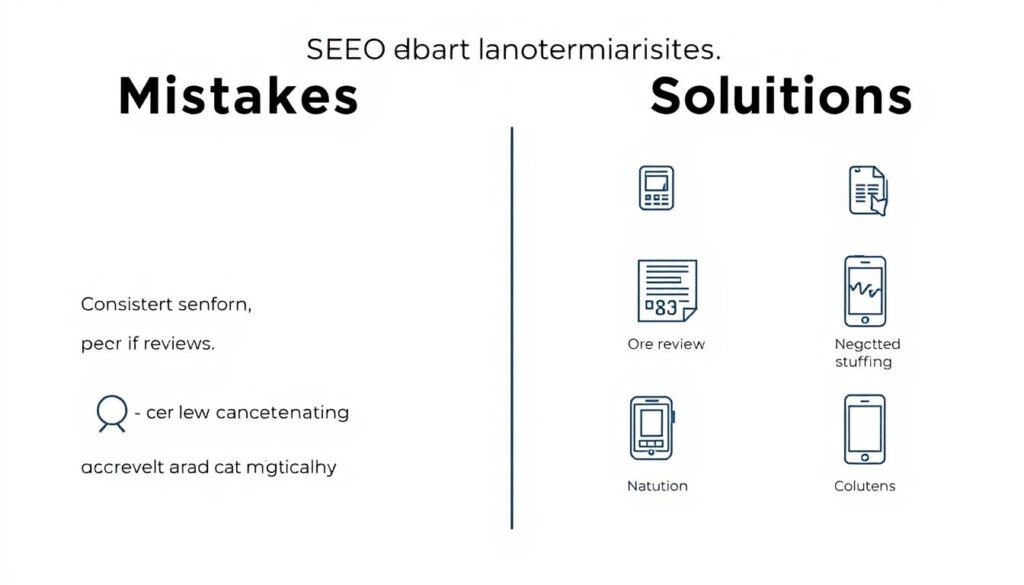
Avoiding these common mistakes can significantly improve your local SEO results
Best Practices
- Maintaining consistent NAP information across all platforms
- Responding promptly to all customer reviews
- Creating unique content for each location
- Optimising for mobile users
- Building quality local backlinks
- Using location-specific keywords naturally
- Regularly updating Google Business Profile
Common Mistakes
- Inconsistent business information across directories
- Ignoring negative reviews or using generic responses
- Using duplicate content for multiple locations
- Neglecting mobile optimisation
- Focusing only on quantity of backlinks, not quality
- Keyword stuffing location terms
- Setting up Google Business Profile and forgetting it
How to Fix Common Local SEO Issues
| Issue | Impact | Solution |
| Inconsistent NAP Information | Confuses search engines, reduces trust signals | Audit all citations and update to ensure consistency; use a citation management tool |
| Poor Mobile Experience | High bounce rates, lower rankings in mobile searches | Implement responsive design, improve page speed, optimise tap targets |
| Unoptimised Title Tags and Meta Descriptions | Missed opportunities for click-through from search results | Include location and keywords in titles and meta descriptions |
| Lack of Local Content | Reduced relevance for local searches | Create location-specific pages and blog content about local topics |
| Ignoring Customer Reviews | Missed engagement opportunities, negative perception | Implement a review management system, respond to all reviews |
Local SEO Priority Matrix: Where to Focus Your Efforts
Not all local SEO tasks deliver equal results. Use this priority matrix to focus your efforts on high-impact activities based on your current situation.
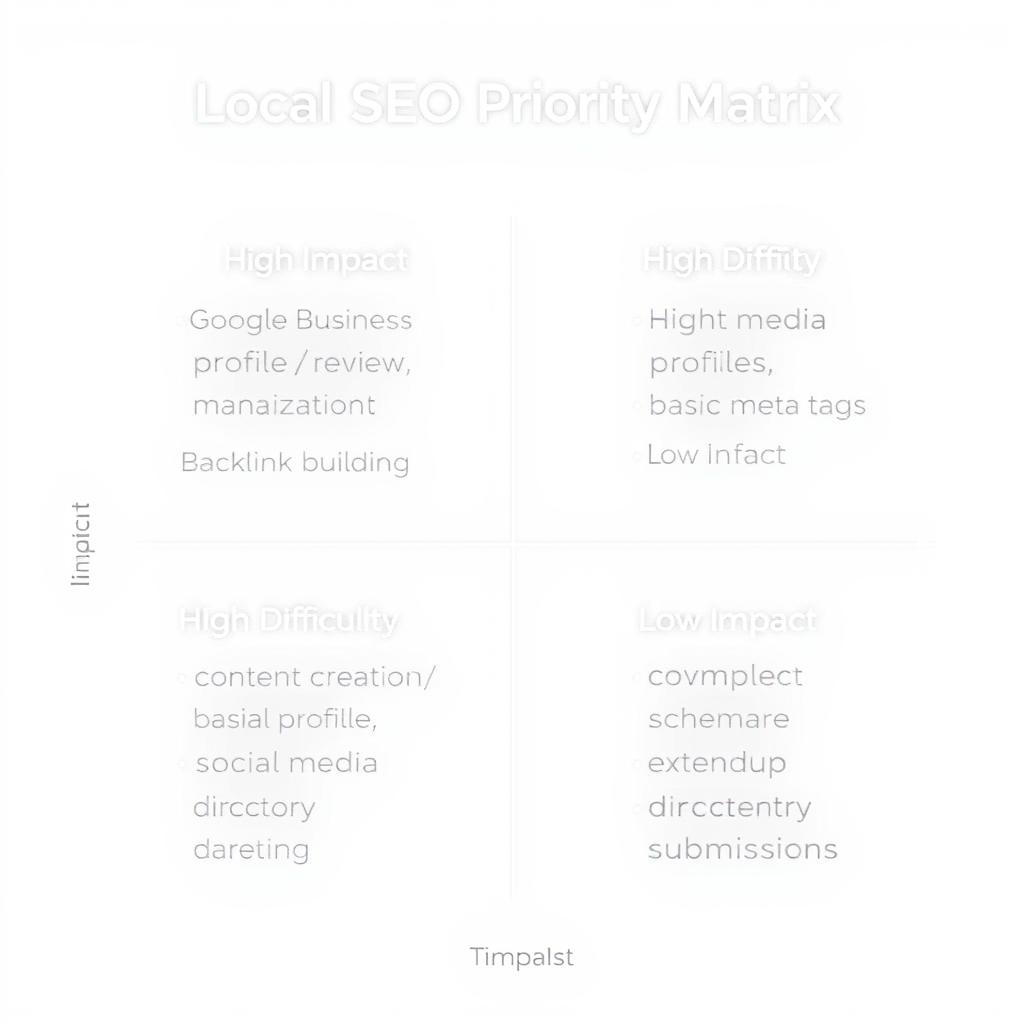
Use this matrix to prioritise your local SEO management activities
How to Use the Priority Matrix
- Start with Quick Wins (High Impact, Low Difficulty): These tasks give you the best return on investment and should be your first priority.
- Plan for Strategic Projects (High Impact, High Difficulty): These require more resources but deliver significant results. Schedule these as part of your longer-term strategy.
- Fill in Gaps (Low Impact, Low Difficulty): These tasks are worth doing when you have extra time, as they’re easy to complete and still provide some benefit.
- Evaluate Carefully (Low Impact, High Difficulty): Only tackle these if you have specific reasons to believe they’ll benefit your business more than the matrix suggests.
Ready to prioritise your local SEO efforts?
Download our customisable Local SEO Priority Matrix template to create your own action plan based on your business’s unique needs and resources.
Taking Control of Your Local SEO Management
Effective local SEO management isn’t a one-time task—it’s an ongoing process that requires attention and adaptation. By focusing on the five key components we’ve covered—Google Business Profile optimisation, local keyword research, review management, localised content creation, and citation building—you’ll build a strong foundation for local search success.
Remember that local SEO is highly competitive, and results take time. Start with the highest-impact activities for your business, measure your results, and continuously refine your approach. With persistence and the right strategies, you’ll improve your visibility to local customers and drive more foot traffic to your business.
Ready to master your local SEO?
Download our complete Local SEO Management Toolkit, including the Priority Matrix template, checklists for each component, and a 90-day implementation plan.








